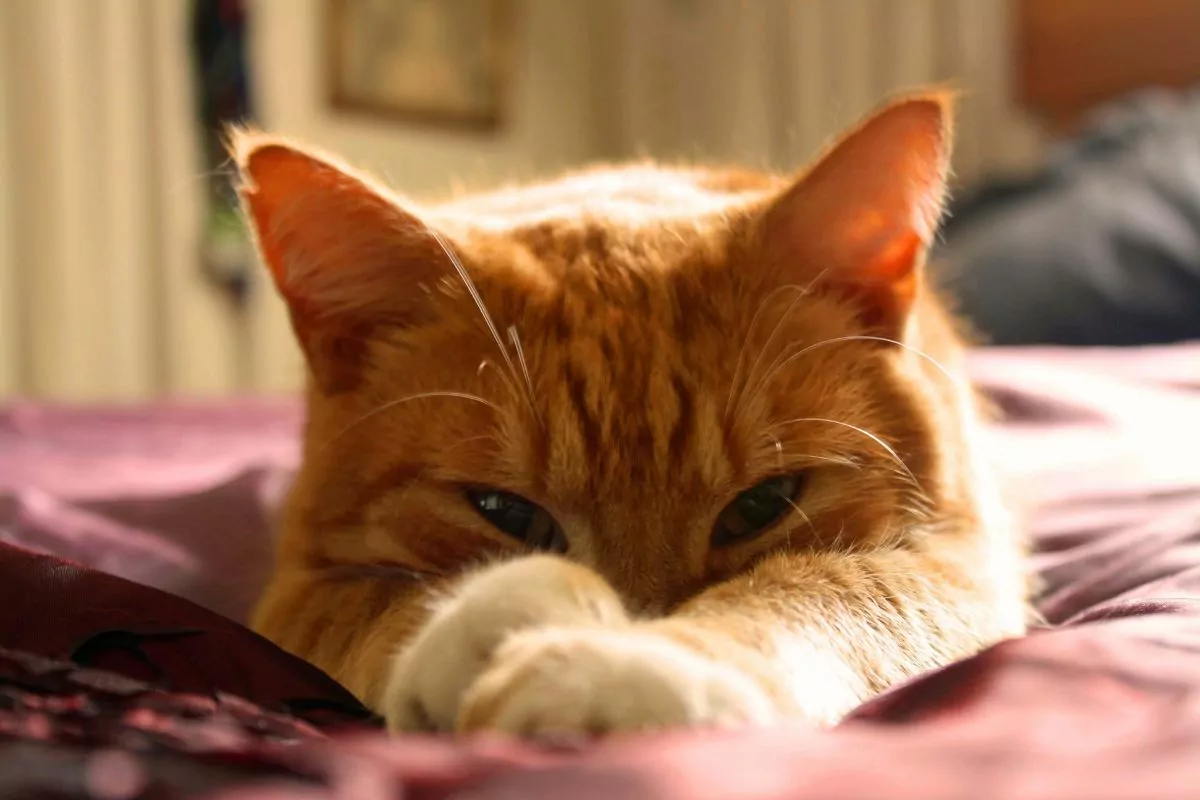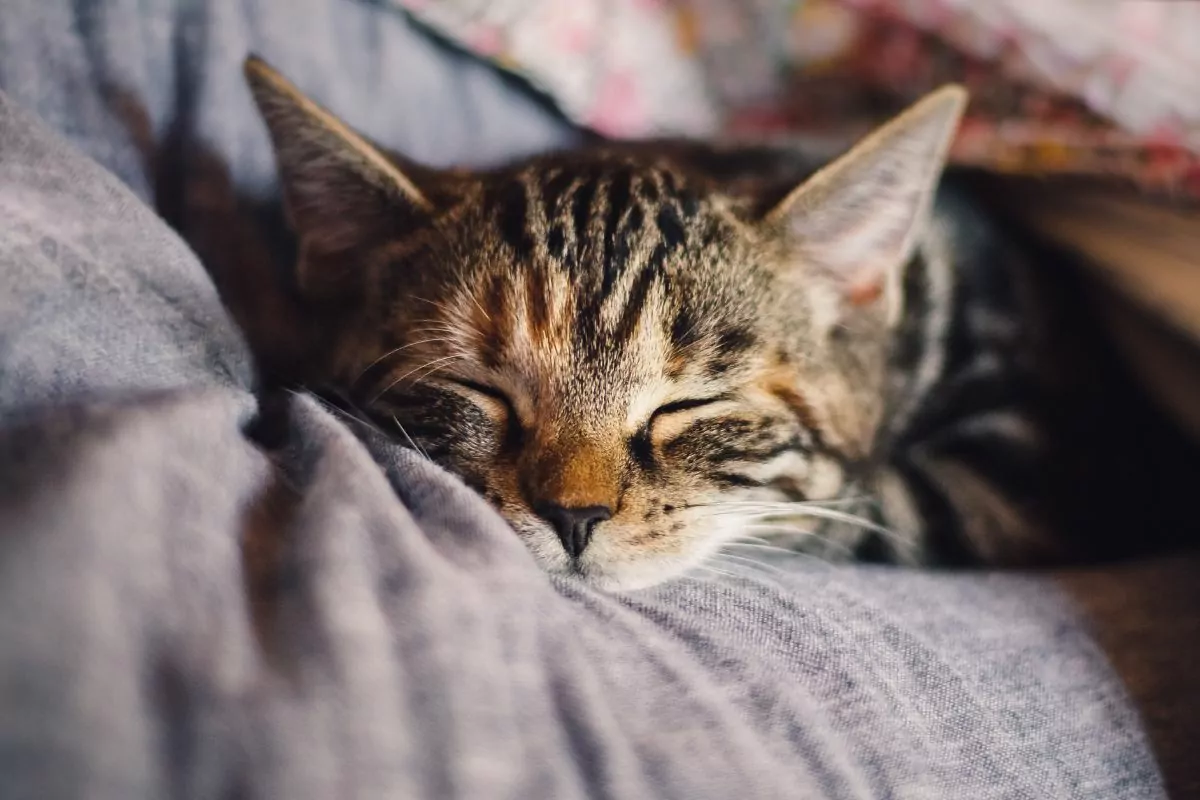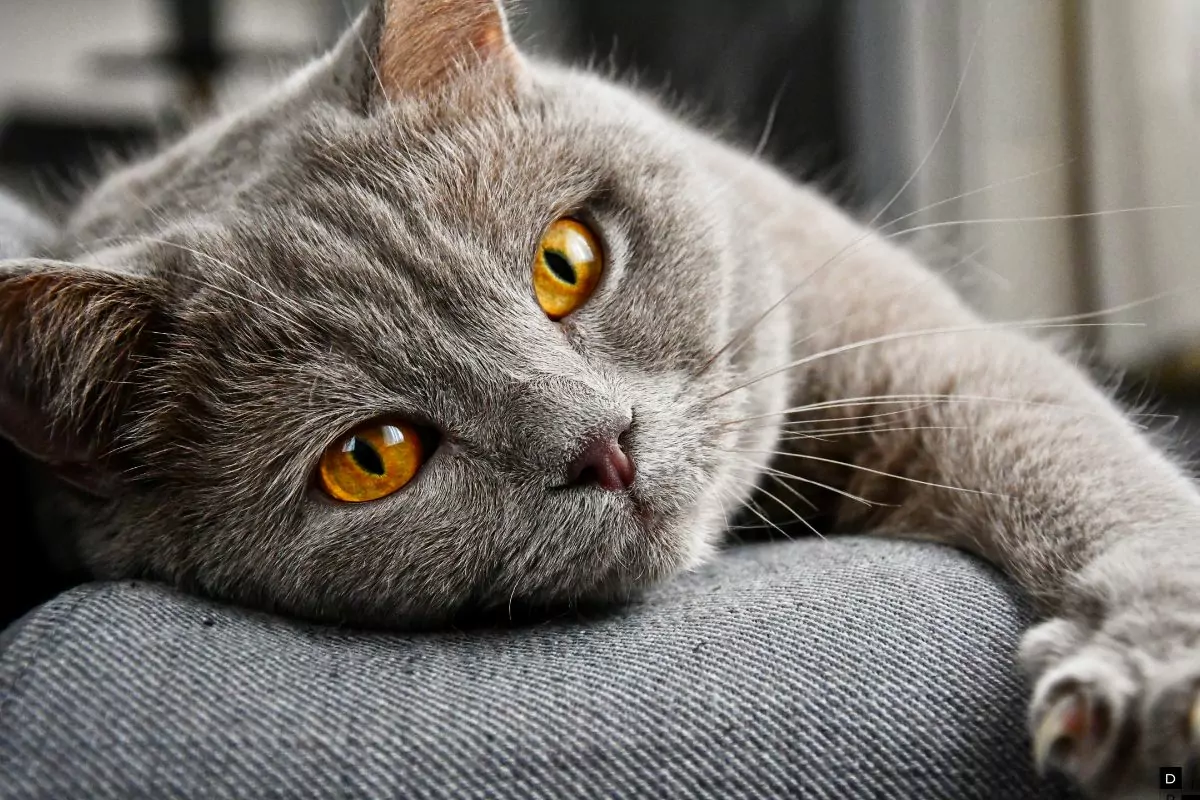Do cats get separation anxiety? Separation anxiety is a condition commonly known in dogs, but recent research suggests that cats can also experience separation anxiety.
Did you know a recent study concluded that 64% of cats living with humans are securely attached to their caregivers? That said, what are the signs of anxiety in cats? And are you wondering how to help cats with separation anxiety? Then this article is for you!

What is Cat Separation Anxiety?
Cat anxiety, specifically separation anxiety in cats, refers to the distress or fear experienced by felines when separated from their owners.
Signs of Anxiety in Cats
Signs of cats with separation anxiety include:
- Excessive meowing, crying, or moaning (vocalization)
- Eating too quickly or not eating at all
- Excessive self-grooming
- Urinating or defecating outside the litter box
- Destructive behavior (pawing furniture)
- Excitement upon returning home that’s out of the ordinary
- Vomiting food or hairballs
- Trying to escape
- Hyper-attachment to their caregiver
- Eliminating inappropriate places (like the owner’s bed)
- Withdrawal or hiding when the owner is about to leave
- Restlessness or pacing before and during separation
- Aggressive behavior toward other pets or people
The type and frequency of symptoms can vary depending on the cat’s gender and breed. A cat’s breed and gender can potentially impact feline separation anxiety. While there isn’t a definitive link, specific factors might influence susceptibility.
Breeds known for their social nature, such as Siamese, Burmese, and Abyssinian cats, may be more prone to separation anxiety due to their strong attachment to their owners. Female cats, in general, tend to exhibit more separation anxiety symptoms than males.
However, it’s important to note that individual temperament and life experiences also play significant roles in a cat’s predisposition to separation anxiety, regardless of breed or gender.
Causes of Feline Separation Anxiety
Factors that could predispose a feline to cat separation anxiety include being a female cat, living strictly indoors, not having other pets in the home, and experiencing changes in routine. Some cats are more sensitive and attached to their owners, making them more prone to this condition.
Some of these behaviors, such as elimination outside the litter box, should not be seen as spiteful acts but rather as a way for the cat to mix their scent with the owner’s and help them find their way home. It also advises seeking veterinary advice to eliminate any possible medical concerns that may be causing the behavior.
Separation anxiety in cats can have various causes, including:
Early Life Experiences
Cats that were weaned too early or separated from their mother and littermates prematurely may develop separation anxiety.
Lack of Socialization
Insufficient exposure to different people, animals, and environments during the critical socialization period can contribute to separation anxiety.
Changes in Routine
Felines are creatures of habit, and sudden changes in their daily routine, such as a move to a new home or changes in an owner’s work schedule, can trigger separation anxiety.
Traumatic Events
Cats that have experienced traumatic events like abandonment, abuse, or being trapped for extended periods may develop separation anxiety as a result.
Loss of a Companion
Felines that have lost a bonded companion, whether it’s another cat or a human family member, can develop separation anxiety due to the sudden absence of their companion.
Overattachment to the Owner
Cats that are excessively dependent on their owners and have not learned to be independent may experience separation anxiety when left alone.
Lack of Stimulation
Felines that do not receive enough mental and physical stimulation or have inadequate environmental enrichment may develop separation anxiety as a way to cope with boredom or frustration.

How do Vets Diagnose the Phenomenon?
Diagnosing feline separation anxiety typically involves a comprehensive evaluation by a veterinarian. Here are some common steps they may take:
- Gathering Information: Vets will begin by asking the cat owner about the cat’s behavior, specifically focusing on the signs and symptoms observed during separations.
- Physical Examination: A full physical exam will be facilitated to rule out any underlying medical conditions that could contribute to the observed behavior.
- Behavior History: Vets may inquire about the cat’s history, including past experiences, changes in the household, and any recent events that may have triggered the separation anxiety symptoms.
- Behavior Observation: If possible, the veterinarian may request video recordings of the cat’s behavior during periods of separation. This can provide valuable insights into the cat’s anxiety-related behaviors.
- Rule Out Other Conditions: Similar behavioral changes can be caused by medical conditions or other behavior problems. The vet will assess if any other conditions need to be ruled out through additional tests or consultations.
- Differential Diagnosis: By considering the cat’s history, observed behaviors, and ruling out other potential causes, the veterinarian will make a differential diagnosis of separation anxiety.
- Referral to a Veterinary Behaviorist: In complex cases or when additional expertise is required, the veterinarian may refer the cat and owner to a veterinary behaviorist, who specializes in diagnosing and treating behavior problems in animals.
Do Cats Get Sad When You Leave?
They may not express it as enthusiastically as dogs, but cats are capable of forming deep attachments with their owners and can feel panicked when left alone.
Why Does My Cat Get Sad When I Leave?
Cats who have become accustomed to their owners’ constant presence during the pandemic may struggle with the sudden change when people start venturing out more. Additionally, cats that have spent a lot of time in shelters or were orphaned, bottle-fed, or weaned too young may be more prone to separation anxiety.
How to Treat Separation Anxiety in Cats
If you suspect your feline has separation anxiety, it’s crucial to consult with a veterinarian to rule out any underlying medical conditions. Once medical issues have been eliminated, you can work with your resident vet to create a plan to address the separation anxiety.
This may involve creating an enriched environment for your cat, providing mental stimulation and physical activity, addressing the cues that trigger anxiety, and potentially using anti-anxiety medication in severe cases. There are also resources and products available to help with separation anxiety in cats, such as food puzzles and pheromone diffusers.
It is not recommended to get an additional cat as a solution for separation anxiety, and punishment or confinement should be avoided.
Other forms of treatment for separation anxiety in cats include managing the environment, using pharmaceuticals or supplements, and behavior modification techniques like relaxation exercises and counterconditioning.
To help reduce a cat’s separation anxiety, there are several strategies you can try. Gradually acclimating your cat to increased periods alone is recommended.
- Leave the TV or radio on a station often played when the owner is present.
- Keep arrivals and departures low-key without making a fuss.
- Create a safe space or refuge for the cat.
- Provide plenty of toys and puzzles for playtime.
- Hide food in toys to stimulate the cat’s prey instincts.
- Start with shorter absences and gradually increase the time away.
- Offer a perch or “catio” for the cat to enjoy their favorite views.
- Consider using room diffusers or pheromones to provide a calming scent (consult with a vet first).
- Remove departure cues, such as putting keys away discreetly.
- Provide affection and playtime upon returning home.
- In more severe cases, consider having a sitter come for play sessions during absences.
Do Cats Miss Other Cats When Separated?
Yes, cats can indeed miss other cats when they are separated. Felines are social animals and can form strong bonds with their feline companions. When separated, cats may exhibit signs of distress, such as increased vocalization, restlessness, or searching behaviors.
They may also show changes in appetite or grooming habits. These behaviors can indicate missing their feline companions and experiencing loneliness or separation anxiety. Providing appropriate socialization and companionship for cats is vital to promote their overall well-being and prevent separation-related issues.
Separation Anxiety in Kittens
Kitten separation anxiety refers to the distress or anxiety experienced by young felines when separated from their primary caregivers or littermates. Kittens, especially during their early developmental stages, rely heavily on their mother and littermates for security, warmth, and social interaction.
When separated from their familiar environment, they may exhibit signs of distress, such as excessive vocalization, destructive behavior, or inappropriate elimination. Kittens with separation anxiety may display clingy behavior, following their caregivers around or constantly seeking attention.
Providing a supportive and nurturing environment, gradual socialization, and positive reinforcement can help alleviate separation anxiety in kittens, allowing them to develop confidence and independence as they grow.
Can Feline Separation Anxiety be Avoided?
Preventing separation anxiety in cats involves selecting confident and well-socialized kittens or cats, encouraging independence, keeping departures low-key, providing enrichment activities, and seeking veterinary help when needed.
Curbing separation anxiety in cats requires preparation and understanding of cat behavior. Providing a safe place for your feline to retreat, offering mental stimulation and physical activity, addressing cues, and teaching resilience can all be helpful strategies.
Organizations like the Best Friends Animal Society, Cornell Feline Health Center, the ASPCA, and the Humane Society have resources dedicated to cat care and dealing with separation anxiety.
It’s important not to always give your cat attention when they seek it, as they can become overly dependent. Instead, direct their attention to toys or use interactive toys like wands. Getting another cat may not be a good solution, as it can actually increase anxiety.
Involving other family members in caring for the cat and using pheromone sprays or plug-ins to help relax the cat can be beneficial. In severe cases, a veterinarian may suggest medication to help the cat relax and cope with the owner’s absence.
If you cannot train your cat to feel less anxious when you’re away, it’s recommended to seek advice and support from a veterinarian, animal behaviorist, or certified animal trainer. They can provide guidance and additional strategies for managing cat separation anxiety.

Recap
Do cats get separation anxiety from their owners? Yes, they sometimes do! Knowing how to treat separation anxiety in cats includes recognizing and addressing feline separation anxiety symptoms.
This is crucial for the well-being of both cats and their owners. Understanding the signs of distress, such as excessive vocalization, destructive behavior, or changes in appetite, can help identify separation anxiety in cats.
Treatment for separation anxiety in cats often involves creating a comforting environment, gradual desensitization to departures, and providing mental and physical stimulation.
Additionally, consulting a veterinarian for professional guidance, considering behavioral therapy, and, if necessary, medication can be effective strategies to help alleviate separation anxiety and improve the overall quality of life for cats and their owners.
If you found value in this article, why not read our article on cat-calming treats to help manage feline separation anxiety?
